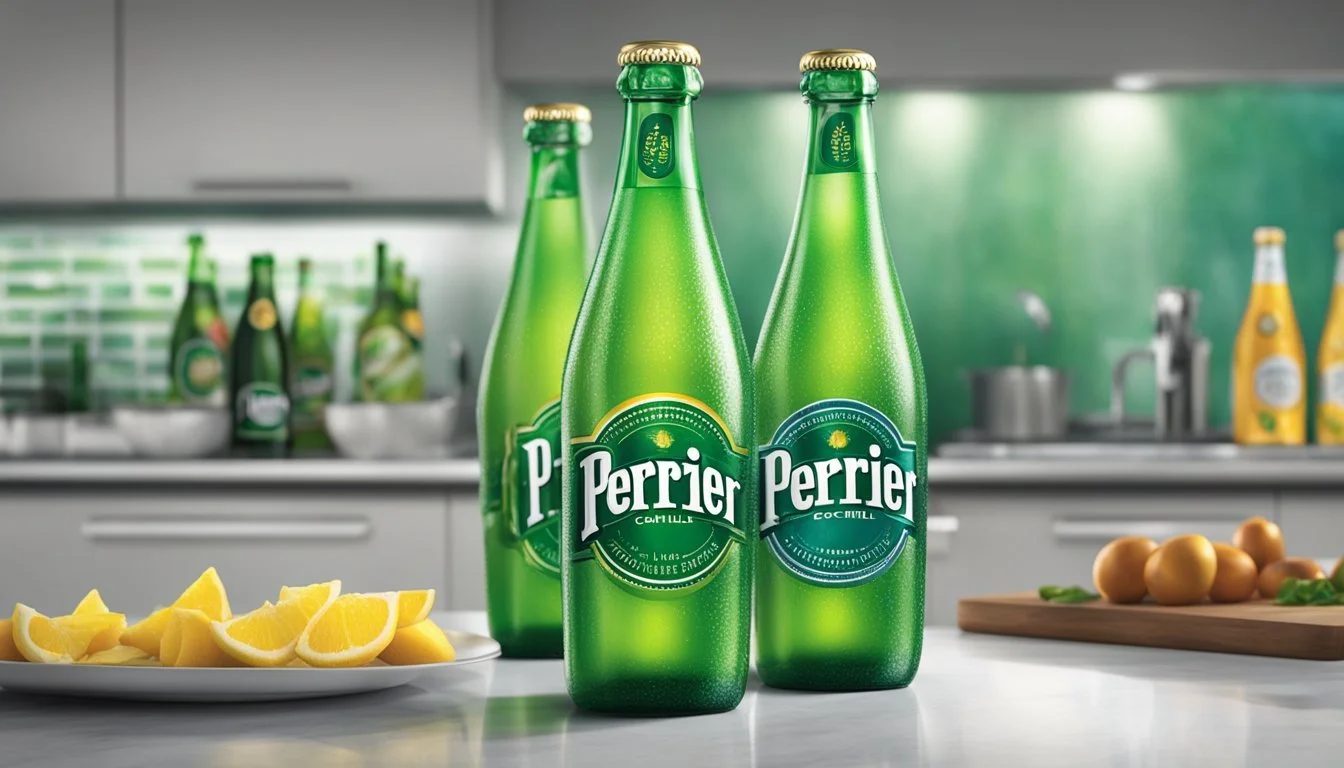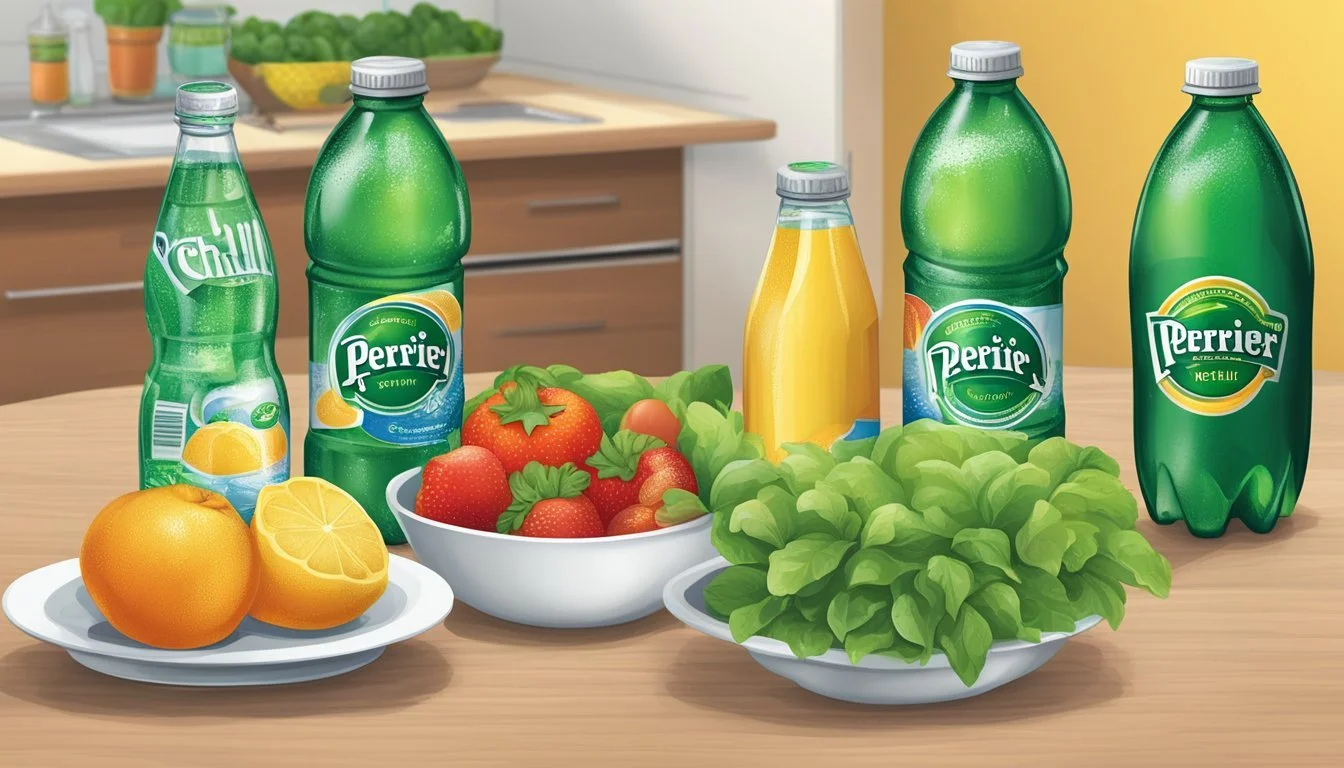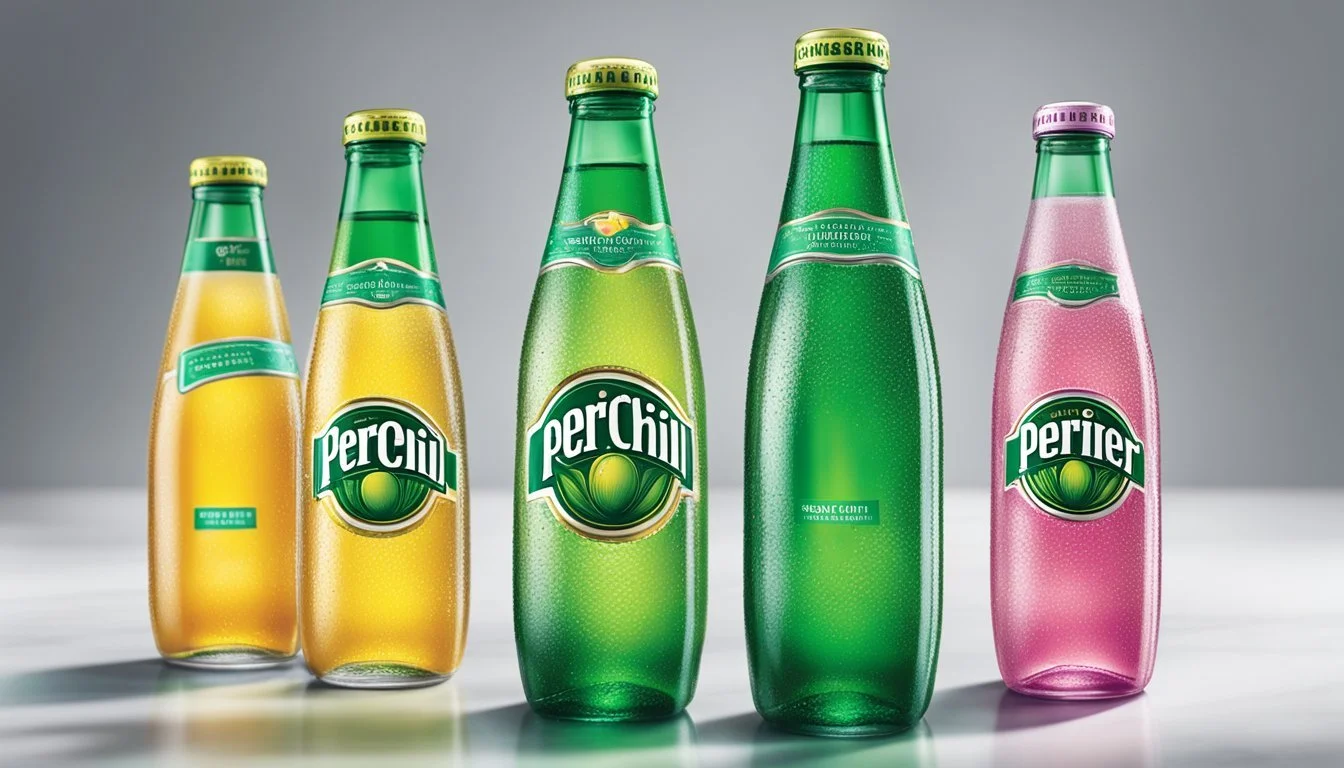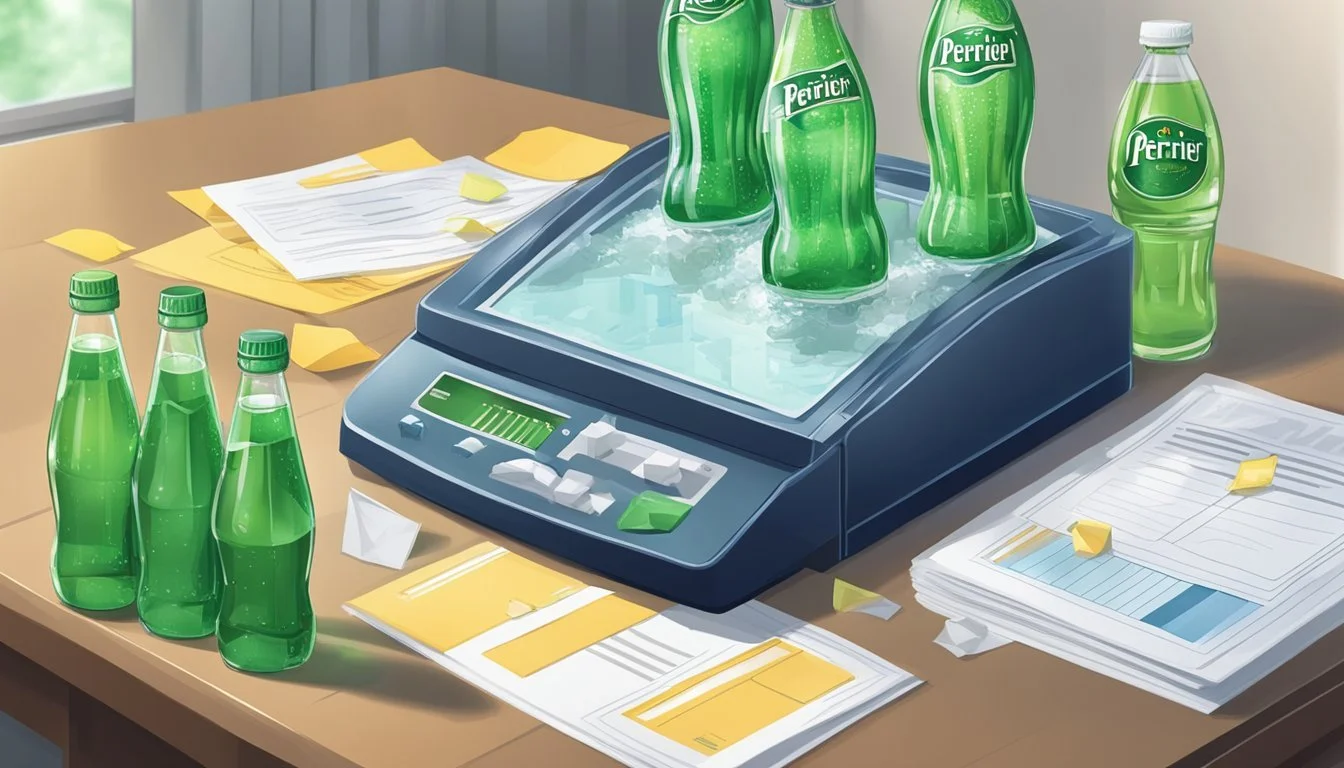Perrier vs. Big Chill
Which Bottled Water is Better? Here's the Verdict
When it comes to choosing the best bottled water, many consumers find themselves torn between Perrier and Big Chill. Both brands offer unique qualities that set them apart in the crowded bottled water market. Perrier is well-known for its natural carbonation and refreshing taste, making it a popular choice for those who enjoy sparkling water. On the other hand, Big Chill offers a pure and reliable option with less of a tang than some other brands, catering to those who prefer still water.
For those looking for a refreshing and naturally carbonated experience, Perrier stands out with its distinct bubbles and mineral-rich profile. The brand has established a reputation for quality and heritage, dating back to the source's origins with Dr. Louis-Eugene Perrier. Its bold flavors make it a versatile drink for various occasions, from casual hydration to a chic mixer in cocktails.
In contrast, Big Chill provides a more straightforward and crisp hydration experience. It's perfect for those who prefer their water without the added fizz but still want the assurance of a clean, high-quality product. While it may lack the brand presence of Perrier, its purity and minimalistic approach appeal to a growing number of consumers.
Comparing the Brands
Perrier and Big Chill stand out in the beverage industry for their distinctive sourcing and production methods, as well as their market presence.
Brand History
Perrier, originating from the Vergèze spring in Southern France, has a storied history dating back to the 19th century. It was first bottled in 1898 and became known worldwide for its sparkling water. Perrier’s association with elegance and fine dining has made it a staple in many households and establishments.
Big Chill, on the other hand, is a relatively new player in the bottled water market. Founded in the early 2000s, it quickly gained popularity due to its emphasis on purity and eco-friendly practices. While its history is shorter, Big Chill has made significant strides in branding and consumer loyalty.
Market Presence and Sales
Perrier has a strong market presence, distributed in over 140 countries. Known for its premium pricing, it targets consumers looking for luxury and quality. Its distinctive green bottle is easily recognizable and associated with a high-end lifestyle. Perrier’s sales reflect its status, consistently performing well in both domestic and international markets.
Big Chill’s market presence, though not as expansive as Perrier’s, has grown rapidly. It has carved a niche among environmentally conscious consumers and those who prioritize health and wellness. Big Chill’s competitive pricing combined with effective marketing strategies has helped it capture a loyal customer base, particularly in North America and Europe.
Sourcing and Production
Perrier sources its water from the naturally carbonated springs in Vergèze, Southern France. The unique mineral composition and carbonation process are what set Perrier apart from other brands. The production process is stringent, ensuring the preservation of its natural effervescence and purity.
Big Chill sources its water from pristine mountain springs. Emphasizing sustainability, the company employs eco-friendly bottling practices and minimizes its carbon footprint. Big Chill prides itself on its rigorous purification process, ensuring that the water remains free from contaminants while retaining its natural minerals. This commitment to quality appeals to health-conscious consumers.
By focusing on unique attributes, both Perrier and Big Chill have established themselves as formidable brands within the bottled water market. These aspects highlight the strengths and appeal of each brand to different segments of consumers.
Water Quality and Contents
In comparing Perrier and Big Chill, it's essential to look at the mineral content, pH levels, and potential health effects of each water brand.
Mineral Content
Perrier is renowned for its high mineral content, particularly magnesium and calcium. It contains approximately 4 mg/L of sodium, 150 mg/L of calcium, 4 mg/L of magnesium, and 390 mg/L of bicarbonate. These minerals contribute to its distinct taste and slight effervescence.
Big Chill, on the other hand, boasts a different mineral composition, focusing more on being a refreshing, hydrating option. While specific values can vary based on the source, it typically features lower levels of sodium than Perrier and higher chloride content. This makes Big Chill potentially less salty, appealing to those monitoring their sodium intake.
pH Levels
The pH level of bottled water can indicate its acidity or alkalinity, influencing taste and potential health benefits. Perrier has a pH of around 5.5, making it slightly acidic. Its acidity is balanced by its rich mineral profile, which can add a refreshing tang to its taste.
Big Chill generally offers a pH level closer to neutral, around 7.5. This neutrality can make it more palatable to those who prefer a less tangy, more neutral-tasting water. Consumers looking for a balanced pH may find Big Chill more appealing.
Health Effects
Mineral water, like Perrier, can provide beneficial minerals that contribute to overall health. The presence of calcium and magnesium in Perrier supports bone health and metabolic functions. Its bicarbonate can aid in digestion and acid-neutralization.
Conversely, Big Chill's lower mineral content may result in fewer direct health benefits from minerals, but it offers excellent hydration. It's a good option for those who need pure, clean water without additional minerals, which might be preferred by people with specific dietary restrictions or those embracing a low-sodium diet.
Taste and Mouthfeel
Perrier and Big Chill present distinct experiences when it comes to taste and mouthfeel. Differences become evident in areas such as carbonation, bubbles, and flavor profiles influenced by various elements like minerals and infused flavors.
Carbonation and Bubbles
Perrier features a high level of natural carbonation from its spring source, giving it a consistent effervescence. The fine bubbles provide a lively, crisp sensation, making it a favorite for those who enjoy a sparkling bite.
Big Chill, on the other hand, has a subtler carbonation. Its bubbles are larger and less aggressive, leading to a softer and smoother mouthfeel. This can appeal to those who prefer a milder sparkling experience. Both waters use carbonation to enhance their refreshing qualities, though the intensity and bubble size differ significantly.
Flavor Profiles
Perrier boasts a mineral-rich taste due to its natural source, with subtle hints of lime and lemon that are often added. The mineral content gives it a distinct, slightly salty flavor that pairs well with its aromatic citrus notes. This combination creates a refreshing and slightly tangy profile.
Big Chill lacks the pronounced mineral taste, offering a more neutral and clean flavor. Some variations include fruit infusions like watermelon or lemon, delivering a gentle hint of flavor without overwhelming the palate. This makes it a flexible choice for those who prefer their sparkling water with a delicate touch of fruit.
Consumer Experience
Perrier and Big Chill offer unique experiences to consumers, differing largely in varieties, flavors, accessibility, and availability. Each brand caters to specific preferences, impacting how they are perceived and chosen by consumers.
Varieties and Flavors
Perrier is known for its sparkling mineral water, which is naturally carbonated at the source in France. It offers a variety of flavors including lime, lemon, pink grapefruit, and natural flavors. The zero-calorie offering and refreshing taste have made Perrier a popular choice among those looking for a sophisticated beverage option.
Big Chill, on the other hand, focuses on both still and sparkling water options. It provides flavors that appeal to a wide audience. The flavors are bold, with an extensive ingredient list, including natural essences. This gives consumers the choice of a flavorful experience without added calories, catering to both health-conscious individuals and those seeking variety.
Accessibility and Availability
Perrier has a strong market presence, often found in upscale stores, grocery chains, and online platforms. Its global reach ensures that consumers can access it easily, whether for everyday hydration or special occasions. The premium positioning of Perrier as a sparkling mineral water also makes it a frequent choice in restaurants and cafes.
Big Chill is widely available in supermarkets, convenience stores, and vending machines, emphasizing accessibility. It targets a broader market, ensuring easy access for a diverse consumer base. The brand’s focus on widespread distribution means it’s often seen in both urban and rural locations, providing hydration solutions across different consumer segments.
Physical and Chemical Attributes
Perrier and Big Chill differ significantly in their ingredients and the amount of carbon dioxide they contain. Understanding these differences can help consumers make more informed choices based on their preferences and health considerations.
Ingredients and Additives
Perrier is renowned for its minimalistic approach. Ingredients include natural mineral water and carbon dioxide. It contains no sugar, artificial sweeteners, or caffeine, making it an excellent choice for those seeking a purely natural beverage.
Big Chill, in contrast, offers flavored varieties that may contain additional ingredients such as citric acid and artificial flavors. These versions might also include sugar or artificial sweeteners to enhance taste. Consumers should check labels for such additives, especially if they have dietary restrictions or preferences for natural ingredients.
Carbon Dioxide Content
The amount of carbon dioxide (CO₂) in Perrier is naturally occurring, providing a consistent level of fizziness known for its refreshing qualities. This natural carbonation results from the water's underground journey through mineral-rich rocks, making it a classic choice for sparkling water enthusiasts.
Big Chill's carbon dioxide content may vary depending on the product line. Unflavored versions are often carbonated naturally or artificially, while flavored types might have adjusted CO₂ levels to suit the added ingredients. The result is varying degrees of effervescence, catering to different taste preferences.
In summary, while Perrier maintains a pure, natural ingredient list with consistent carbonation, Big Chill offers a variety of options that may include added ingredients and varying carbonation levels.
Health and Nutrition
When comparing Perrier to Big Chill bottled water, it's essential to consider their impacts on hydration and dietary needs. Both options serve specific purposes depending on individual health goals and preferences.
Hydration Factors
Perrier is a sparkling mineral water known for its carbonation. Some individuals find the fizzy sensation encourages them to drink more, thereby enhancing hydration. However, carbonation can cause bloating for some people.
Big Chill typically refers to a brand offering purified still water. It's excellent for those who prefer a non-carbonated, clean drinking experience. Both waters are effective for hydration, but personal preference for still vs. sparkling might influence which one feels more hydrating and comfortable.
Dietary Considerations
Perrier contains naturally occurring minerals like calcium and magnesium, though in small amounts. It has no added sugar, zero calories, and low sodium, making it suitable for low-sodium diets and those looking to avoid calories and sugars.
Big Chill purified water usually lacks additional minerals but ensures zero calories, no added sugar, and no sodium content. For pure hydration needs without extra nutrients, Big Chill is a strong choice.
In comparing the two, Perrier stands out for providing slight mineral benefits, beneficial for those who enjoy a bit of mineral intake without significant calorie or sugar concerns.
Price and Value
When it comes to price, Perrier typically falls on the higher end of the spectrum. A standard bottle of Perrier can cost around $1.50 to $2.50 depending on the location and retailer. This premium pricing reflects its branding as a luxurious sparkling water.
In contrast, Big Chill is often marketed as an inexpensive option. Prices for Big Chill can be as low as $0.50 per bottle, making it accessible for more budget-conscious consumers. This substantial price difference indicates Big Chill's positioning in the market as a cost-effective choice.
Price Comparison:
Brand Price Range per Bottle Perrier $1.50 - $2.50 Big Chill $0.50 - $1.00
While Perrier offers a premium experience with its natural carbonation and distinctive mineral content, Big Chill provides a basic yet satisfying hydration solution. Consumers looking for value in bottled water might appreciate Big Chill's affordability.
When evaluating the value, it isn't just about the price. Perrier's higher cost might be justified for those who prioritize taste and branding. Big Chill’s value lies in its ability to quench thirst at a fraction of the price, making it a practical choice for everyday use. These factors offer distinct advantages depending on the consumer's priorities.
Regulatory Compliance
Both Perrier and Big Chill must adhere to strict regulatory guidelines that govern bottled water quality and safety. These guidelines ensure that the water is safe for consumption and meets various purity standards.
Quality Assurance Standards
Perrier, known for its carbonated mineral water, is subject to rigorous quality tests. They claim to source water directly from a spring in France, ensuring natural purity. Big Chill, on the other hand, usually offers non-carbonated options and must meet equally stringent quality assurance standards. Quality control involves regular testing for contaminants such as PFAS chemicals, heavy metals, and microbiological elements.
Testing is frequent and extensive, focusing on multiple aspects of water quality, including taste, mineral content, and purity. Certification by industry bodies further validates their compliance with these standards, ensuring consumer safety.
FDA and EPA Regulations
The FDA regulates bottled water as a food product in the United States. Both brands must comply with FDA regulations to ensure that their water meets the same safety standards as public drinking water. This includes limits on contaminants like lead and arsenic. EPA regulations are often aligned with these FDA standards.
In addition to federal regulations, Perrier must also comply with European standards, adding an extra layer of scrutiny. Big Chill primarily focuses on adhering to U.S. standards. Both the FDA and EPA mandate transparent labeling practices, requiring accurate disclosure of mineral content, source information, and possible contaminants.
More About Perrier
Icelandic Glacial vs Perrier: Which Bottled Water is Better?
Mountain Valley Spring Water vs Perrier: Which Bottled Water is Better?
Perrier vs Kirkland Signature: Which Bottled Water is Better?
Perrier vs Richard's Rainwater: Which Bottled Water is Better?
Perrier vs Whole Foods Italian Still Mineral water: Which Bottled Water is Better?
More About Big Chill
Big Chill vs Kirkland Signature: Which Bottled Water is Better?
Big Chill vs Talking Rain AQA: Which Bottled Water is Better?
Big Chill vs Whole Foods 365: Which Bottled Water is Better?
Cascade Mountain vs Big Chill: Which Bottled Water is Better?
Hawaii Volcanic vs Big Chill: Which Bottled Water is Better?
Hawaiian Springs vs Big Chill: Which Bottled Water is Better?
Icelandic Glacial vs Big Chill: Which Bottled Water is Better?
Mountain Valley Spring Water vs Big Chill: Which Bottled Water is Better?
Nestle Pure Life vs Big Chill: Which Bottled Water is Better?
Richard's Rainwater vs Big Chill: Which Bottled Water is Better?
Solan de Cabras vs Big Chill: Which Bottled Water is Better?
Whole Foods Italian Still Mineral water vs Big Chill: Which Bottled Water is Better?







